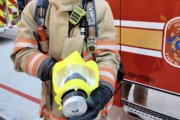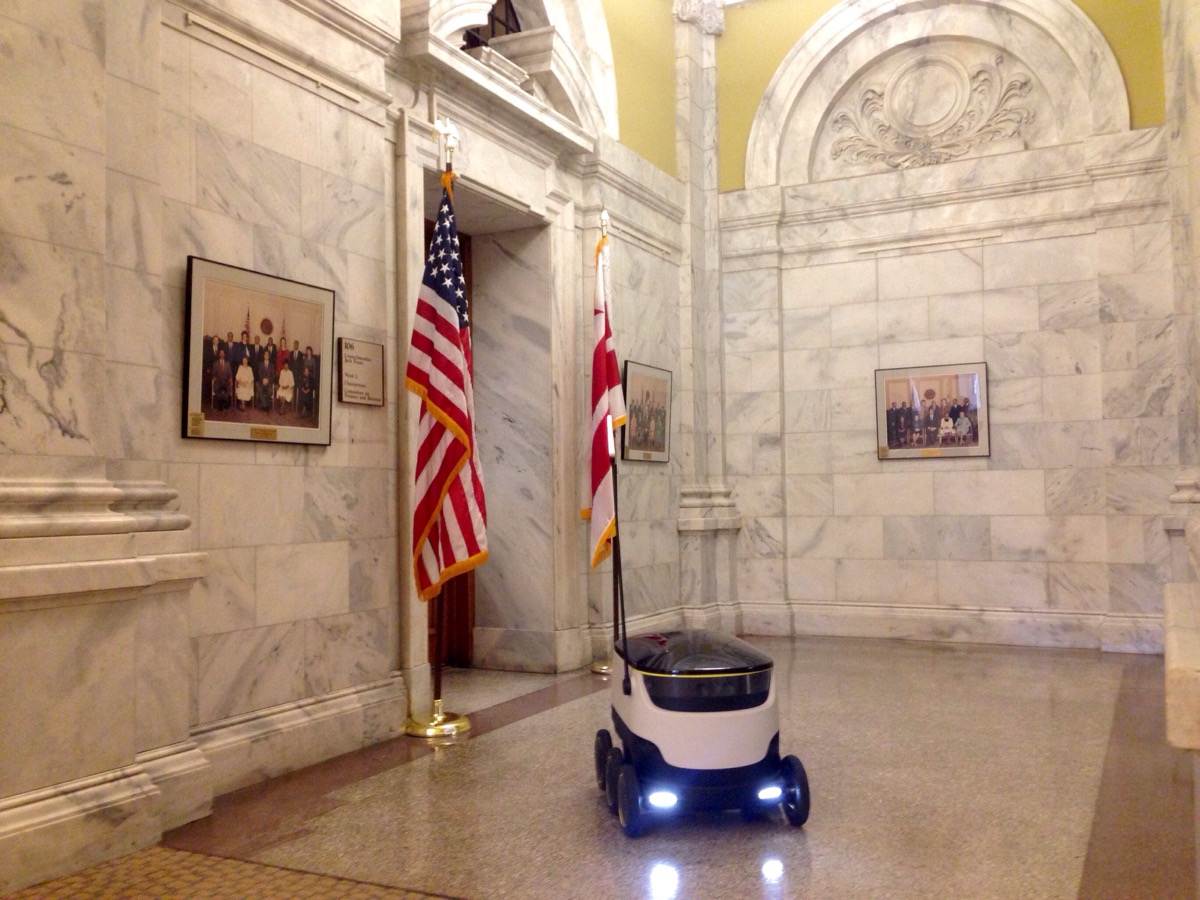
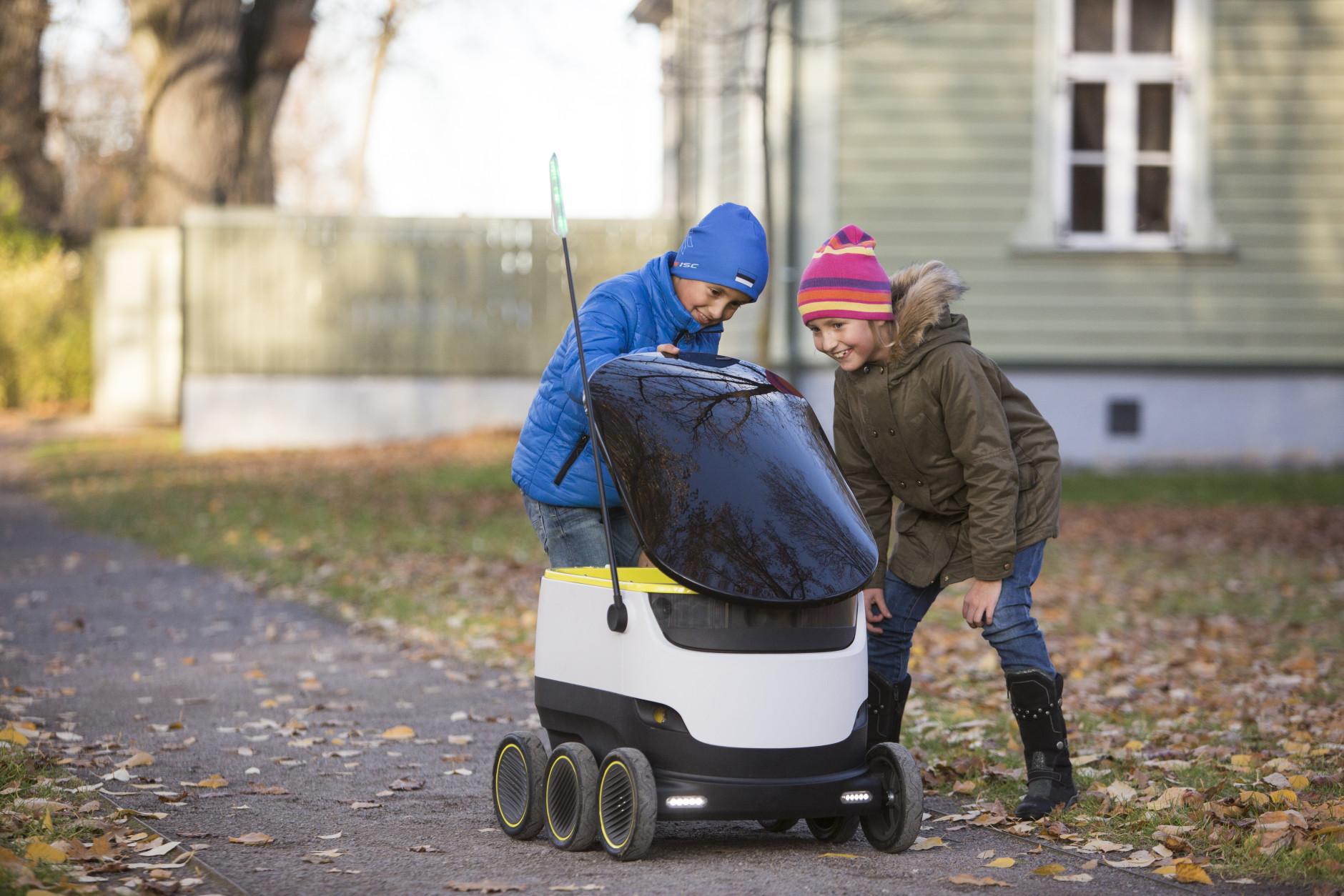
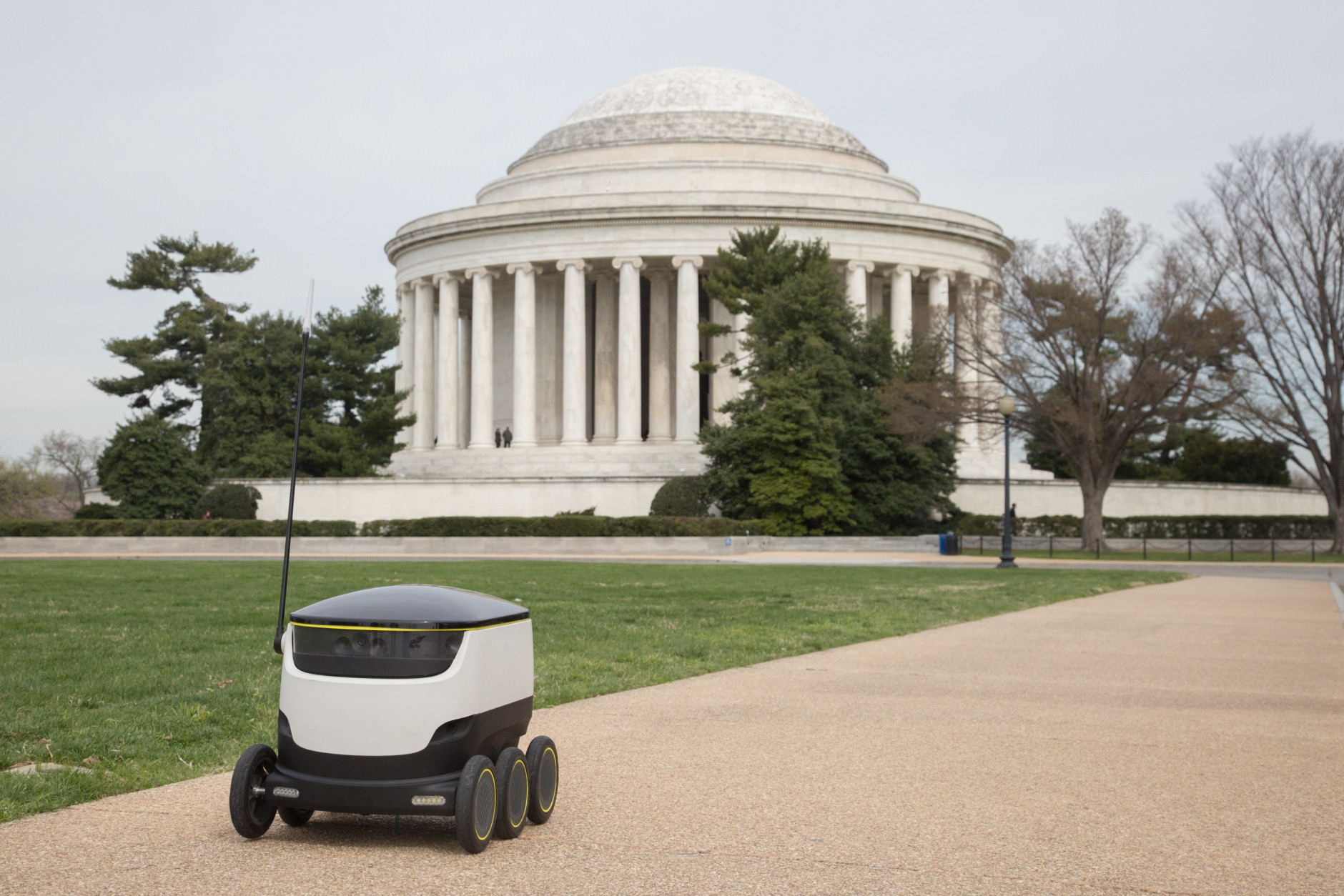
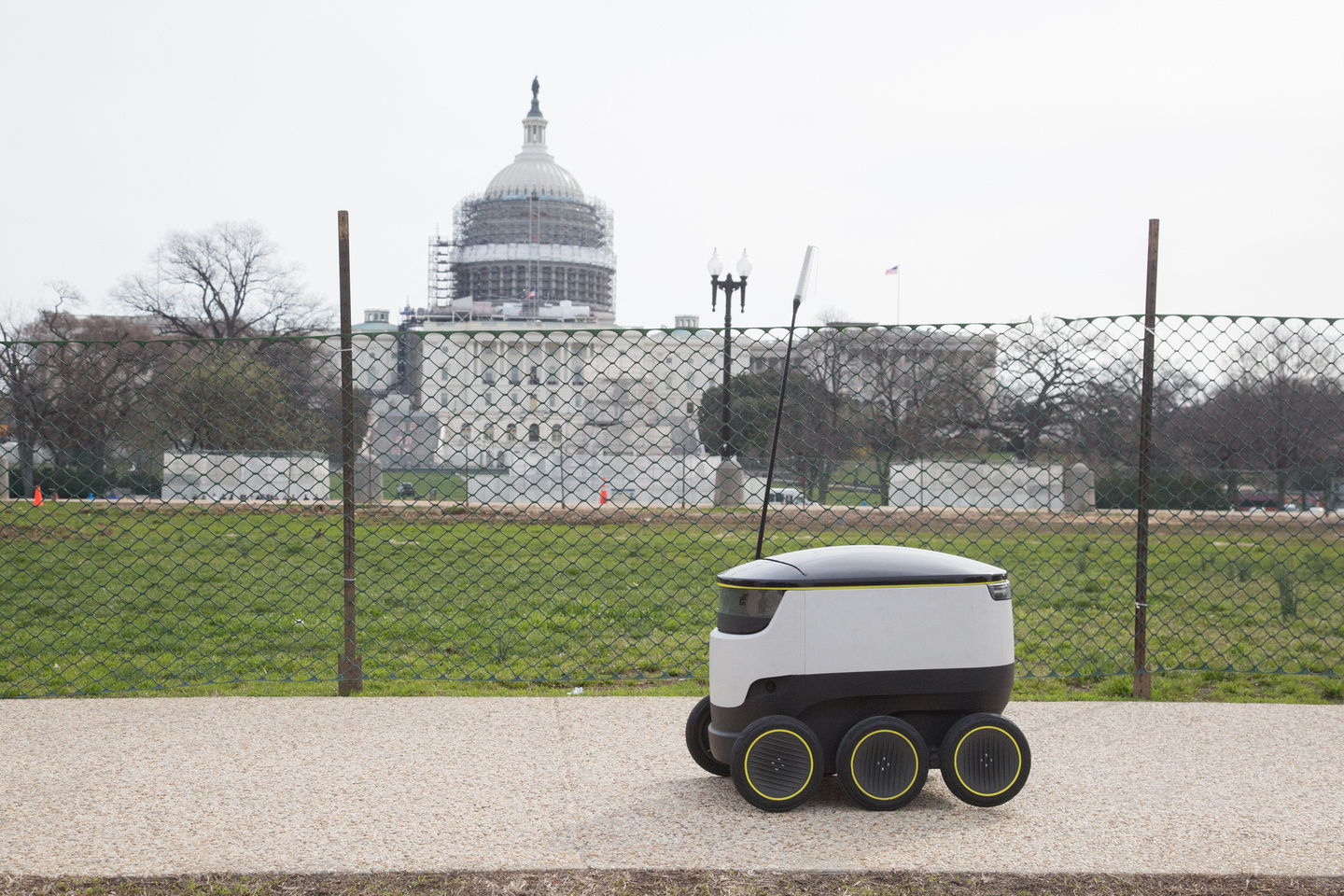
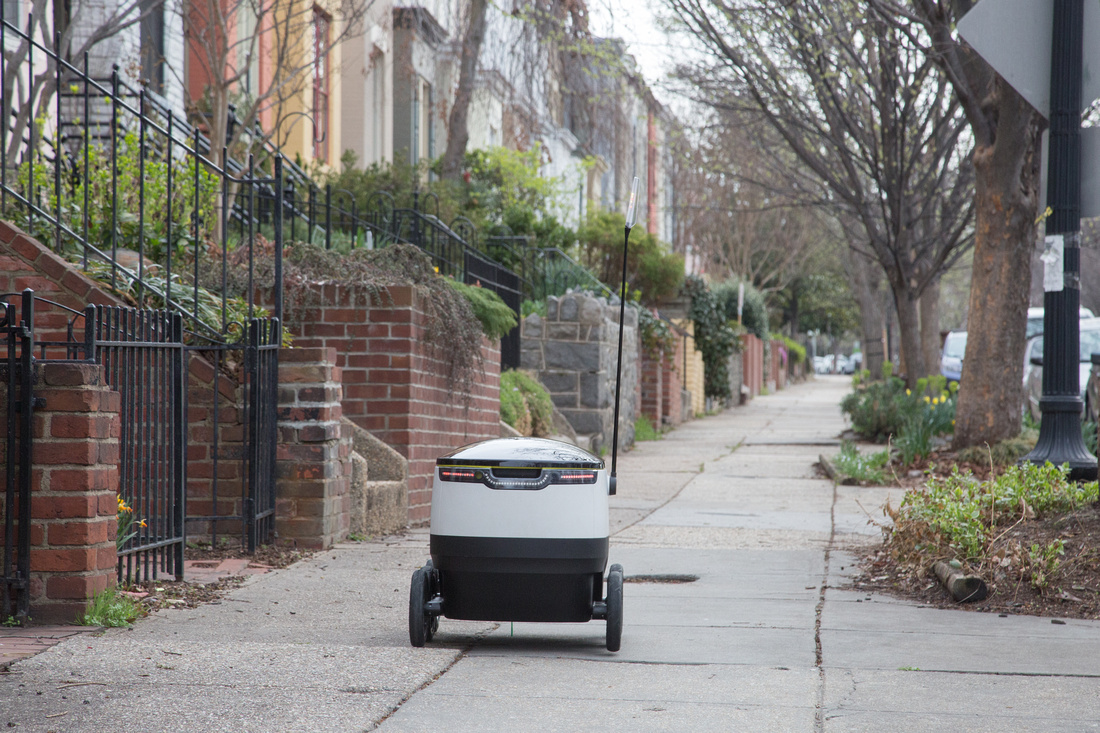

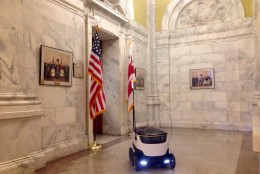
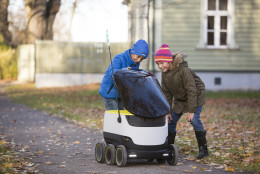
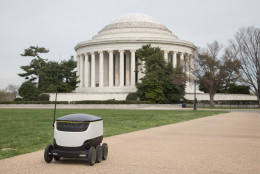
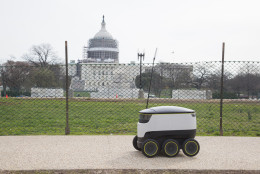
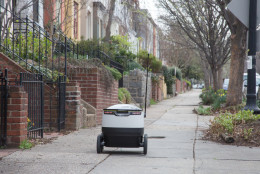
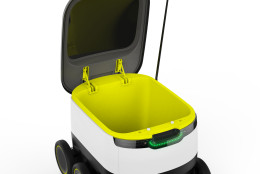
WASHINGTON — Drones can’t legally fly inside the Beltway, so packages delivered by drones in D.C. is not really a possibility. But that is only if you are looking to the skies.
Starship, a European company started by the co-founders of Skype, got approval last week from the D.C. Council to begin testing their delivery robots on Washington sidewalks.
Best described as mini Stormtroopers on wheels, these Starship robots are designed to deliver products ordered online to customers when and where they request it.
“People just don’t want aerial drones above their heads, over their backyards, or above their kids playing in the street because if they drop out of the sky or something fails, they are going to hurt someone,” Starship spokesman Henry Harris-Burland told WTOP.
These ‘grounded drones’ will only travel about two or three miles away from its home base at about four miles per hour. Starship officials said it will roll down the sidewalk with pedestrians and follow all traffic laws.
“The robot’s now traveled 4,000 miles in more than 12 countries and 35 cities. It’s come into contact with 400,000 people on its travels. And to date, we have not had one incident of theft or vandalism.”
For safety, these robots are outfitted with nine cameras that are always recording and two-way audio to communicate with people it interacts with — though some may find the idea of a roaming robot always recording what it sees a bit off-putting.
There will also always be a human operator that can take control of the robot and has an alarm if someone tries to pick it up.
Customers would have a unique PIN to enter to unlock the robot and retrieve their delivery.
Starship was started when two Skype co-founders were looking for “another industry to disrupt” and saw the perfect opportunity to do that with local delivery.
“[Local delivery] is incredibly inefficient. No one actually enjoys the process,” Harris-Burland explained. “The delivery drivers don’t enjoy it. The people receiving the goods don’t enjoy it because they are barely at home. The industry hasn’t been disrupted by technology.”
The word ‘disrupt’ usually makes stomachs within an industry turn, especially if it means replacing people with robots. But Starship says there will be a net gain on jobs.
“We still need delivery drivers,” said Harris-Burland. “Delivery drivers are actually still the most efficient mode of transport for the first five or 100 miles of the transportation process. Our robots are only looking at the final one or two or three miles of the process.”
The company says with more demand for their services, they expect there to be a greater need for these more intermediate distance delivery drivers to get products in place for these little Stormtroopers to send out to customers.
Testing in Washington is expected to begin in September.




